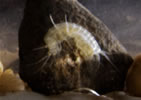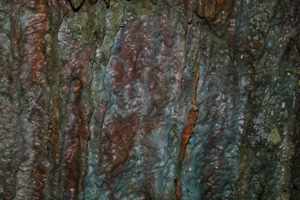 |
Cave Life of Devon |
 |
| |
| HOME |
| INTRODUCTION |
| LIFE IN THE ENTRANCE |
| LIFE IN THE CAVE |
| CONSERVATION |
| GLOSSARY |
| ACKNOWLEDGEMENTS |
| Bacteria |
| Fungi |
| Plants, Algae & Protozoans |
| Flatworms |
| Eelworms & Segmented Worms |
| Slugs & Snails |
| Crustacea |
| Insects |
| Spiders & Millipedes |
| Fish & Amphibians |
| Birds |
| Bats |
| Fossils and archeology |
| |
Bacteria |
||||
There are many species of bacteria found in the cave environment, most of which you will not notice as they are individually minute. Between them they have a variety of lifestyles including saprophytes (live on dead organic matter), pathogens (cause disease), chemoautotrophs (obtain energy by oxidising or reducing iron and sulphur compounds) and nitrifying bacteria (oxidise ammonia to nitrite or nitrate, using carbon dioxide as their sole carbon source). Chemoautotrophic bacteria obtain energy by the oxidation or reduction of simple inorganic substances (e.g. iron, sulphur, nitrogen). They only need simple inorganic elements to survive e.g. iron or sulphur, moisture, carbon dioxide and a few trace elements to survive, they do not need sunlight like green plants. In British mines (and caves) Ferrobacillus ferrooxidans uses carbon dioxide as its carbon source and oxidizes iron to obtain energy. Sulphur reducing and oxidizing bacteria are usually found near shale rock containing pyrite. As well as the chemoautotroph bacteria there are many species that feed heterotrophically on ready made organic material. Heterotrophic filamentous bacteria have been found growing on flowstone in Welsh caves. Where these bacteria obtain their source of organic food is not clear. For cavers the most important heterotroph is the spirochaete Leptospira interrogans which causes Weil’s disease. There are over 180 strains of this bacterium, the most serious infections are carried by the brown rat. 9% of British cavers carry antibodies demonstrating some prior contact with the pathogen, although most infections do not develop into Weil’s disease. Actinomyctes are moldlike filamentous bacteria – they are often responsible for the damp moldy smell in caves. Some possess antibiotic properties which may be why moonmilk has been used as a wound dressing and cavers with colds report cold symptoms disappearing underground. Some Actinomycetes synthesise carotene – the brown colour it produces is responsible for the brown colour of certain cave insects. The sparkling yellow and silver patches on the walls just beyond the limit of light are thought to be a combination of a fungus and a bacteria. It could be a species of actinomycete. The sparkling effect is due to drops of condensation reflecting your cave light.
A brown jelly like cyanobacter seen outside cave entrances is Nostoc sp. This occurs as both a free living cyanobacter and in association with a fungi to form a lichen. When wet it swells up hence its name, jelly lichen. It is a photobiont that cannot survive on acidic rocks like granite and quartzite
|
.jpg)
